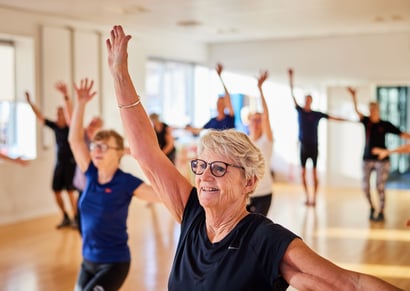 The quick answer, we became experts because we have been specializing in this population for over 20 years in our work in senior living communities. It takes time and dedication to develop a niche as strong as what NIFS has within an industry. We have been part of the wellness evolution as fitness centers were included in renovations and master plans and communities looked to staffing and programming models to help their residents use these amenities safely. We’ve further witnessed consumer options evolve in the senior living landscape with more choices than ever before on where older adults choose to live including 55+ neighborhoods, IL communities, to lifeplan communities. Each environment has its own priorities and challenges in supporting the health and fitness needs of the residents who live there but all understand the necessity of providing vibrant lifestyles. The industry is expected to grow by $100 billion by 2027 alone which means more even more options for consumers. That’s where NIFS Wellness Companion comes into play as a solution in fitness, nutrition and wellness resources that seamlessly plug into the needs of senior living communities.
The quick answer, we became experts because we have been specializing in this population for over 20 years in our work in senior living communities. It takes time and dedication to develop a niche as strong as what NIFS has within an industry. We have been part of the wellness evolution as fitness centers were included in renovations and master plans and communities looked to staffing and programming models to help their residents use these amenities safely. We’ve further witnessed consumer options evolve in the senior living landscape with more choices than ever before on where older adults choose to live including 55+ neighborhoods, IL communities, to lifeplan communities. Each environment has its own priorities and challenges in supporting the health and fitness needs of the residents who live there but all understand the necessity of providing vibrant lifestyles. The industry is expected to grow by $100 billion by 2027 alone which means more even more options for consumers. That’s where NIFS Wellness Companion comes into play as a solution in fitness, nutrition and wellness resources that seamlessly plug into the needs of senior living communities.
What makes NIFS niche in senior living special? It comes down to 3 areas of expertise.
- We hire degreed professionals and provide them with rigorous training to become specialists in senior fitness. Few fitness professionals on the market possess the skillset to step into a senior living setting and provide aquatics programming, fall prevention services, balance assessments, group fitness classes and the background to prescribe customized exercise plans for someone 70+. NIFS staff report their skillset unique to older adult programming increases by 75% in their first year upon joining our team and 90% of these team members already possess a degree in exercise science. The needs of your residents and program are truly a specialization.
- Because we have worked in senior living for over 20 years with our fitness management clients, we know the players and we know the motivations in your community. Your lifestyle director is a jack of all trades often playing a role with activities, the concierge, transportation and outings. They love making their residents happy and are stretched on time and resources. Marketing and sales know that the ability to showcase a vibrant lifestyle is essential to their ability to meet occupancy goals. Your nursing staff knows that residents who are physically active and engaged can stay independent longer while decreasing fall risks
- We know your residents. We know that you have several different populations living within your community ranging from those in their late 60’s to 100+. We know that it takes variety in programs and the right approach to effectively engage them in what is being offered. This is truly where our specialization in creating content and programs is rooted. We understand the interests, barriers and goals of seniors and we have spent two decades flexing our creative muscles to effectively connect residents with education and programming that keeps them regularly engaged.


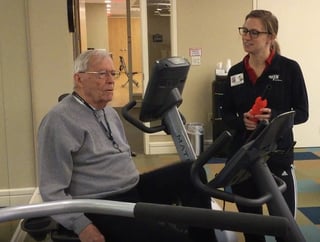 There are a lot of news releases lately outlining new construction or expansion projects in senior living. Many of those projects include outfitting a brand new or dramatically overhauled community fitness center.
There are a lot of news releases lately outlining new construction or expansion projects in senior living. Many of those projects include outfitting a brand new or dramatically overhauled community fitness center.

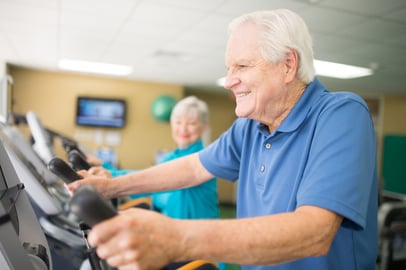 The senior living industry has been fervently moving over the past decade to renovate and build fitness centers for their residents and the momentum is only growing.
The senior living industry has been fervently moving over the past decade to renovate and build fitness centers for their residents and the momentum is only growing.
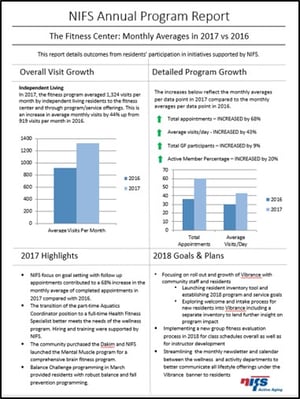 If you DIY the fitness program in your senior living community, you probably think your offerings are market-standard and don't need to be reconsidered. Even with strong staff running your fitness program, that in-house team has limits on what they can build for the community, and it's likely that
If you DIY the fitness program in your senior living community, you probably think your offerings are market-standard and don't need to be reconsidered. Even with strong staff running your fitness program, that in-house team has limits on what they can build for the community, and it's likely that 
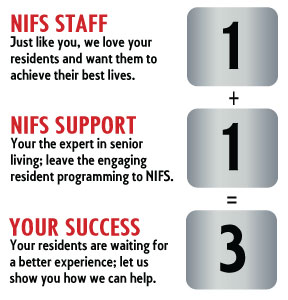
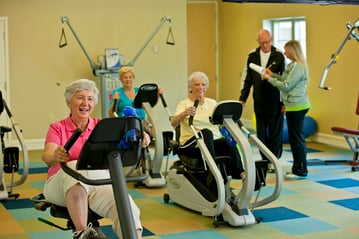 You need your fitness center to be a hallmark, a standout for the community. For your current residents, it should be one of the most praised offerings both because the staff are well-loved and because they are effective at keeping residents engaged with new, consistent, well-done offerings. The fitness program should also be on the list of reasons prospective residents choose your community. But if the group fitness calendar and the personal training services look the same as all the competition, and if you don't have the necessary data to tell key stories about how resident's lives have been improved by participating, then you're missing out on an opportunity.
You need your fitness center to be a hallmark, a standout for the community. For your current residents, it should be one of the most praised offerings both because the staff are well-loved and because they are effective at keeping residents engaged with new, consistent, well-done offerings. The fitness program should also be on the list of reasons prospective residents choose your community. But if the group fitness calendar and the personal training services look the same as all the competition, and if you don't have the necessary data to tell key stories about how resident's lives have been improved by participating, then you're missing out on an opportunity. Several months ago, my parents were prospects in the market to relocate to a continuing care retirement community (CCRC) from their 4.5-acre home of almost 20 years. There were a variety of reasons for them making this move consideration, but age and ill health weren’t on that list.
Several months ago, my parents were prospects in the market to relocate to a continuing care retirement community (CCRC) from their 4.5-acre home of almost 20 years. There were a variety of reasons for them making this move consideration, but age and ill health weren’t on that list. 
 From the
From the 
 Unless you live under a really, really big rock, you have no doubt heard about the importance of robust wellness opportunities as central to a successful senior living community. There have been some fabulous profiles lately on organizations that are doing an amazing job of connecting their residents and others in the surrounding areas to opportunities to live well. Two recent examples highlighted by
Unless you live under a really, really big rock, you have no doubt heard about the importance of robust wellness opportunities as central to a successful senior living community. There have been some fabulous profiles lately on organizations that are doing an amazing job of connecting their residents and others in the surrounding areas to opportunities to live well. Two recent examples highlighted by 
